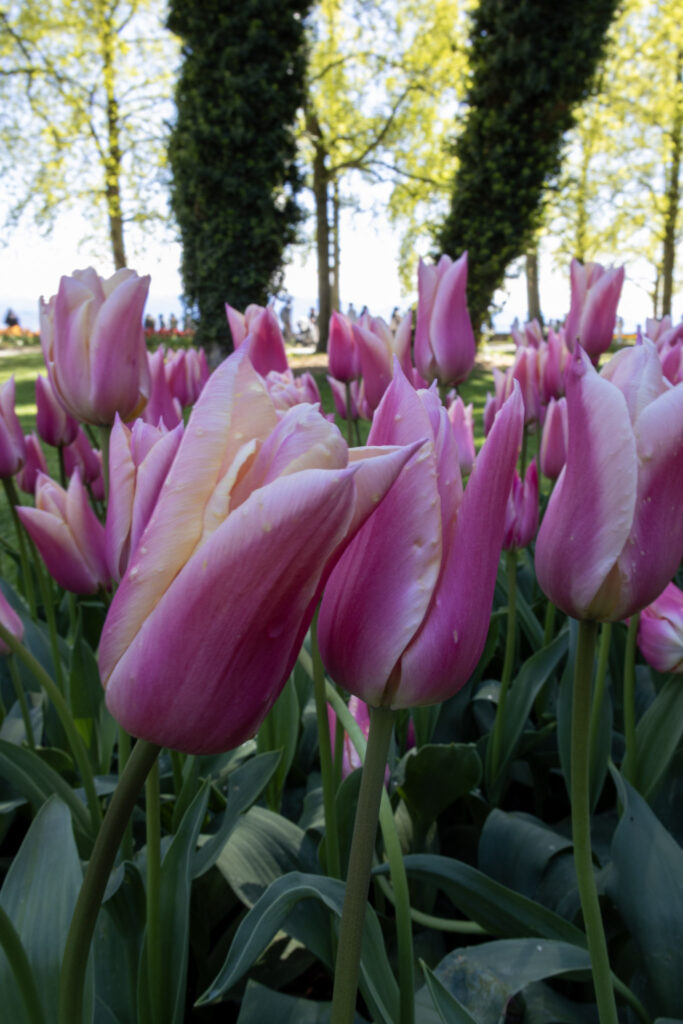
Driving across Switzerland from the easternmost tip to the west is possible within a four-to-five-hour drive. I find this fact astounding, as I spent my childhood driving approximately nine hours between my mother and father. I remember listening to the fuzzy radio and long chats on the way, looking outside to endless plains of corn and wheat.
Switzerland is a relatively small country—roughly the size of Vermont and New Hampshire combined, or about nine times smaller than California—but it’s incredibly dense with surreal landscapes. The lakes are so clear you can see the moss on the bottom, and the towering snowcapped mountains make the scenery feel like something out of Jurassic Park. I especially love taking it all in from a train—an everyday European luxury I’ll never take for granted.
A change in landscape—or even language—is never far away. Switzerland has four national languages, and within just an hour or two from Geneva, you can find yourself wandering through medieval châteaux, exploring UNESCO-listed vineyards, or standing among the remnants of the Roman Empire.
- Annecy, France
- Chamonix, France
- Yvoire, France
- Mont Salève, France
- Aosta, Italy
- Montreux, Switzerland
- Gruyères, Switzerland
- Lavaux, Vineyard Terraces, Switzerland
- Lausanne, Switzerland
- Morges, Switzerland
Annecy, France
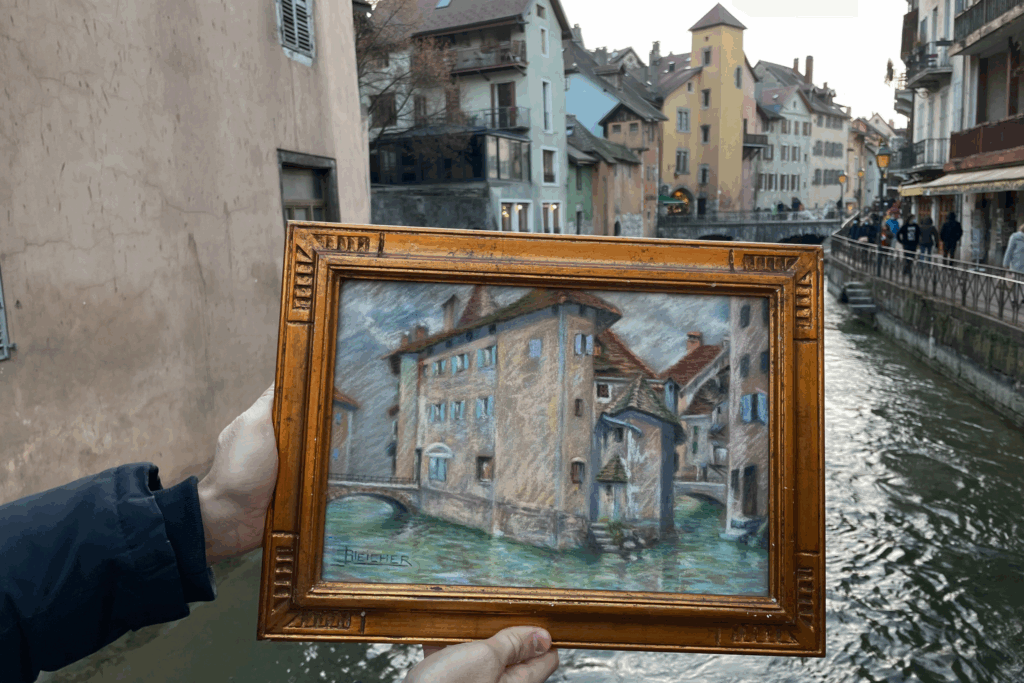
Traveling to Annecy had a stronger impact on me than I wished, for I simply couldn’t imagine leaving it behind. As the train zipped through vast plains, the sudden view of tumbling hills and faraway snow-capped mountains emerged as if in space, discovering unfamiliar galaxies.
The Old Town was even more dreamlike – with vivid pink, yellow and orange buildings built along canals, small arched bridges leading to shops made of stone selling Savoyard specialties such as cheese, sausage and blueberry tarts, small art galleries and stores with discounted soy candles and flower crowns.
Known locally as the Venice of the French Alps, I find Annecy even better. While Venice’s astounding beauty and Medici glory can be overwhelming to new travelers, Annecy’s quaint size is digestible, one that is easily can be explored in an afternoon. Annecy plays up on its Italian charm, with several gelato shops and pizzerias, and even organizes a Venetian Carnaval each February.
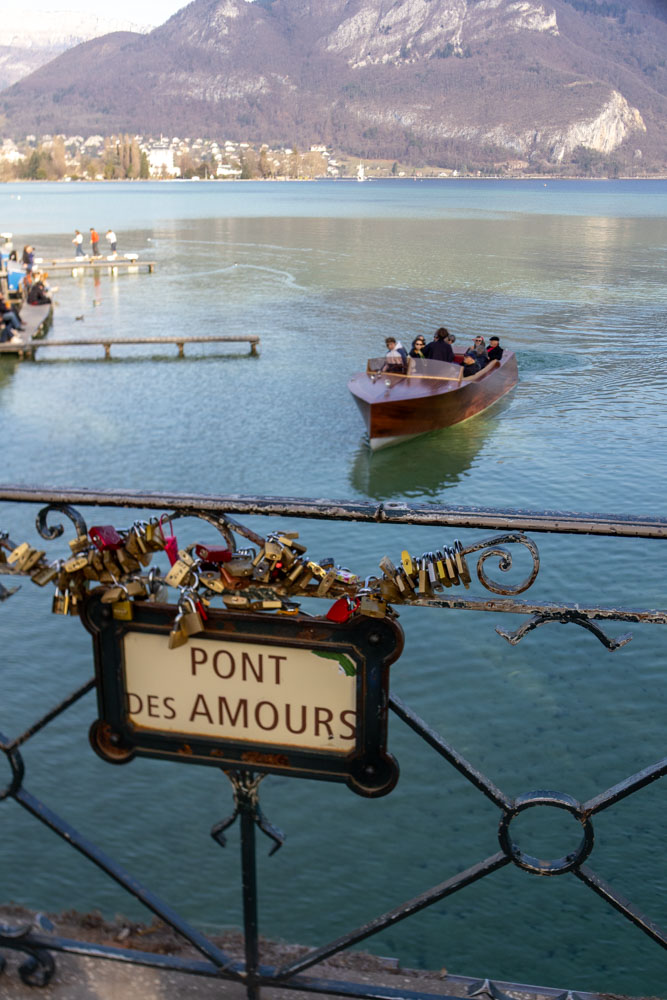
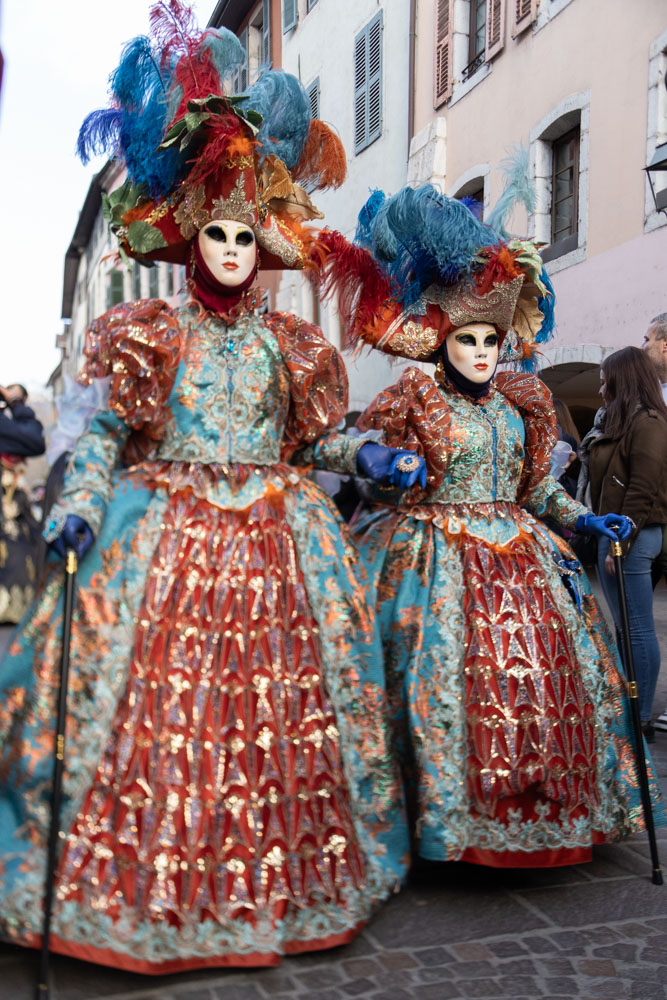
Stroll through the narrow and hidden passageways surrounding the old prison—now a hotspot for selfies—before grabbing a gelato and crossing the Pont des Amours (Lover’s Bridge). Rent a paddle boat and zip across one of the clearest lakes in Europe, stopping to dip in the transparent water. Picnic in le Pâquier promenade, catching the best views of the lake and surrounding mountains. The space is particularly popular on the first Saturday of August for la Fête du Lac, which welcomes nearly 200,000 spectators to its captivating firework display.
Getting to Annecy from Geneva is refreshingly easy, even without a car. You can hop on a direct bus from Geneva’s main bus station (Place Dorcière) or the airport, with the journey taking just 45 to 50 minutes. Alternatively, the new Léman Express train departs from Geneva’s Eaux-Vives station and reaches Annecy in about 1 hour and 30 minutes (train tickets may be purchased here).
Chamonix, France
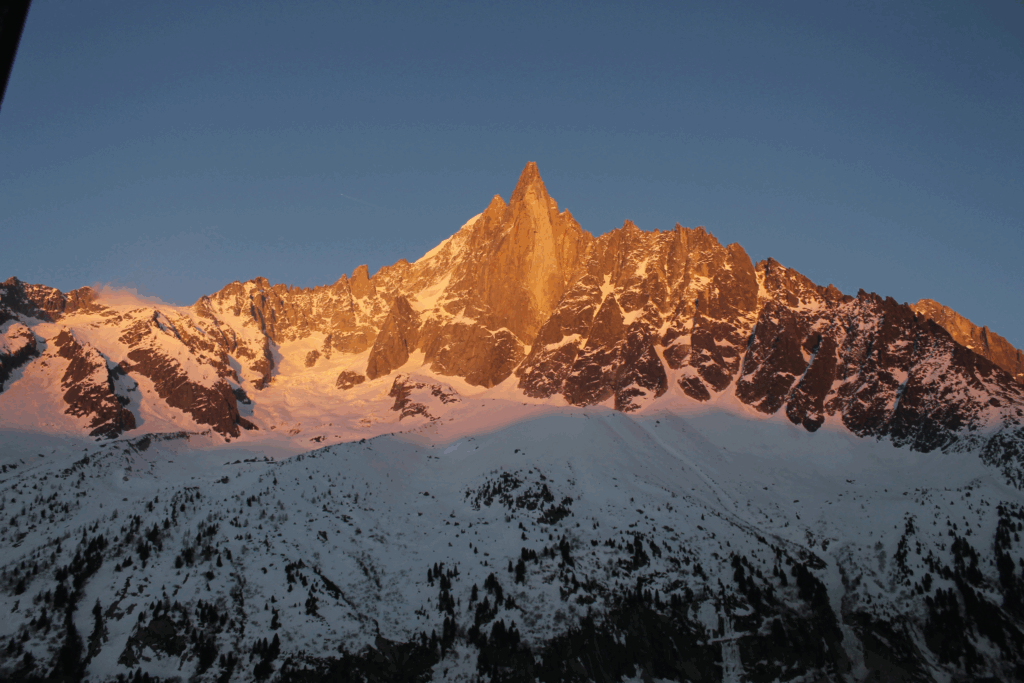
Sounds of an avalanche and tumbling rock dropping from high above caught my breath in my chest. It seemed as if we were at the edge of the world. The sun cast a marmalade glow, transforming the blue sky into soft shades of violet. The last cogwheel train had descended over an hour, leaving the guests at the Refuge du Montenvers alone with the sounds of howling wolves.
Feet cold from an afternoon of snowshoeing, we warmed up in the Chalet to a melted pot of Savoyard fondue (not to be confused with Swiss fondue). This was Chamonix.
Whether a seasoned skier or simply in it for Alpine tartiflette or raclette, Chamonix is a must for any traveler passing through the French Alps. Easily accessible from Geneva (1 hour driving or 2 hours by train), Chamonix is packed with unique activities, including a descent of 170 steps to see the Mer de Glace, a museum of ice sculptures built within a glacier. Thrill seekers can “step into the void”, entering a tiny glass box at the highest point in the valley, l’Aiguille du Midi, to capture views of Mont Blanc and the drop 1,000m (3,280 ft.) below.
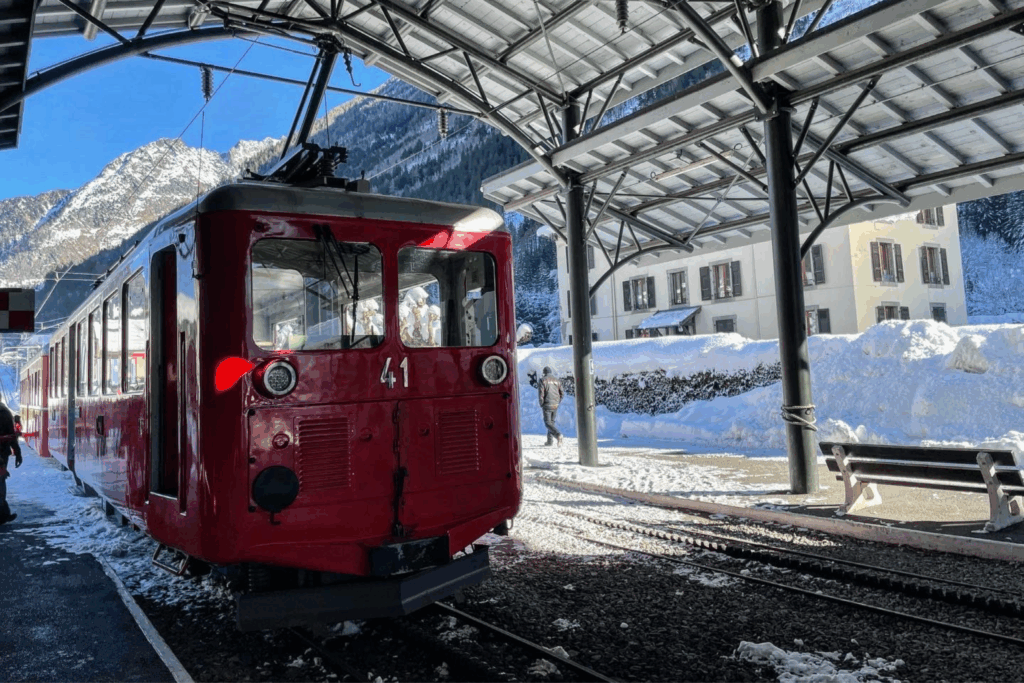
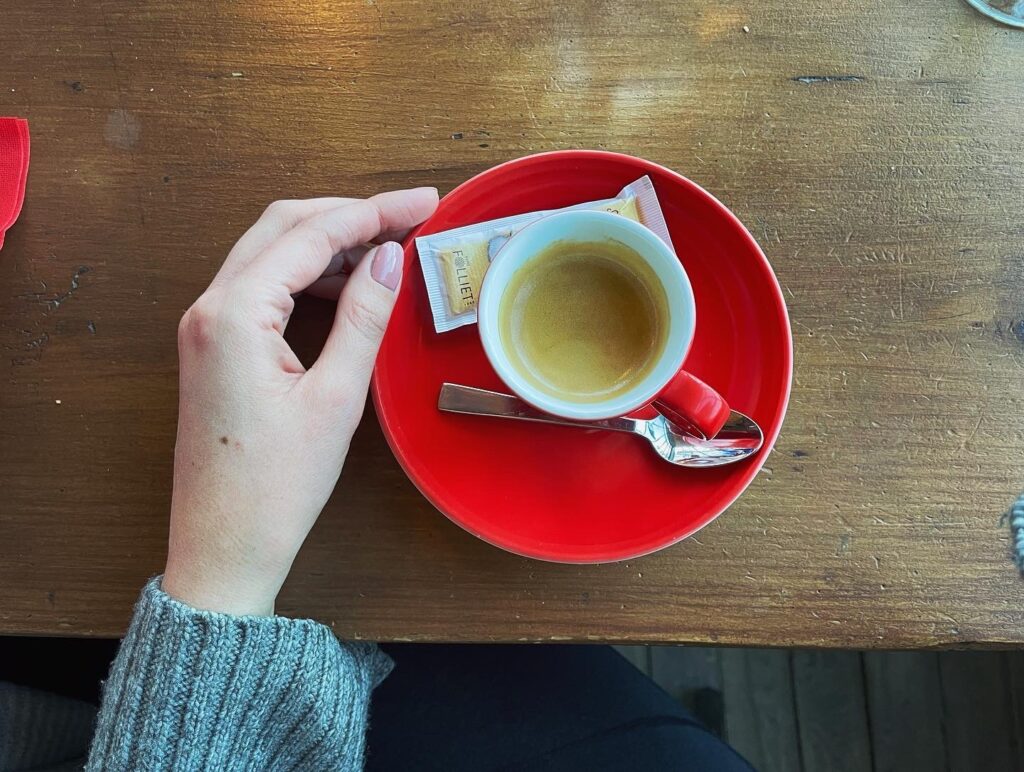
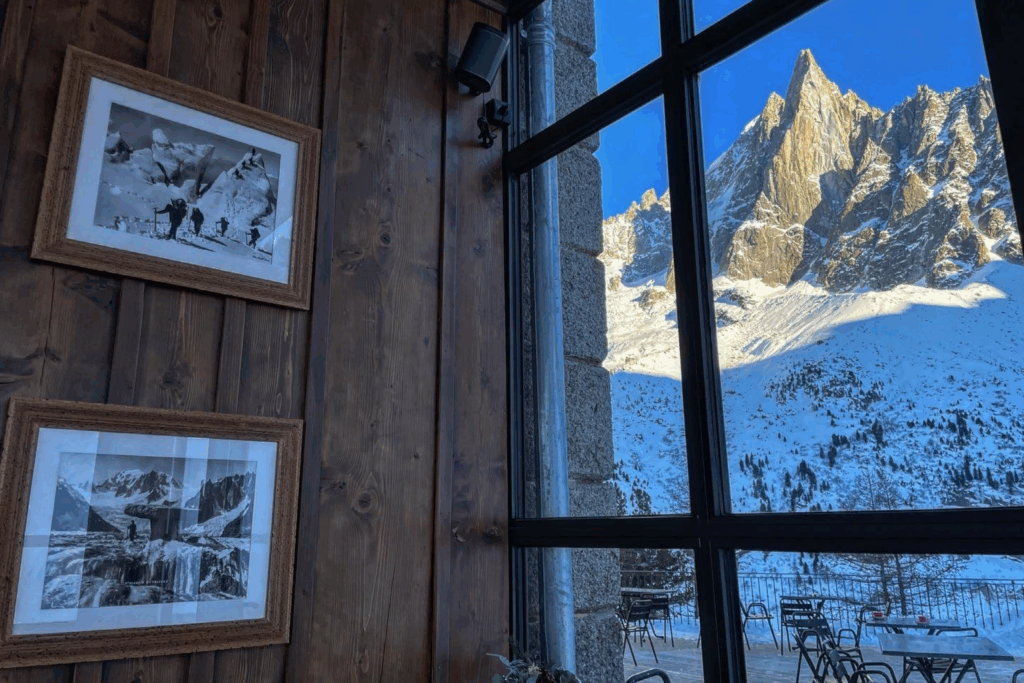
Yvoire, France
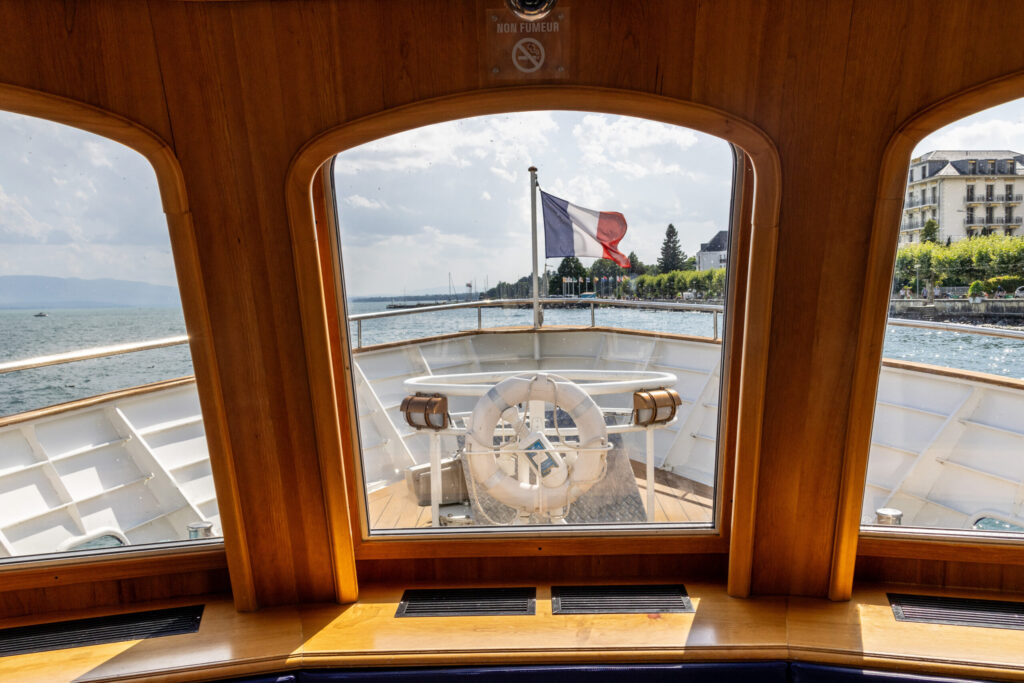
The 1.5-hour journey from Geneva to the medieval French village of Yvoire is magic in its own right. The Compagnie générale de navigation (CGN) is comprised of eight early 19th century steamboats that chug across Lake Geneva each summer. If you are sensitive to le mal de mer, it’s also possible to shorten the journey by driving, or by taking a train from Geneva to Nyon followed by a shorter, 20-minute boat ride to Yvoire.
As the crew begins to rope the steamboat to the dock, passengers will catch a glimpse of a château perched on fortified walls, acting as an outer facing guardian protecting the village. Owned by the Yvoire family since the 17th century, the château remains closed to the public, adding to its bewitchment.
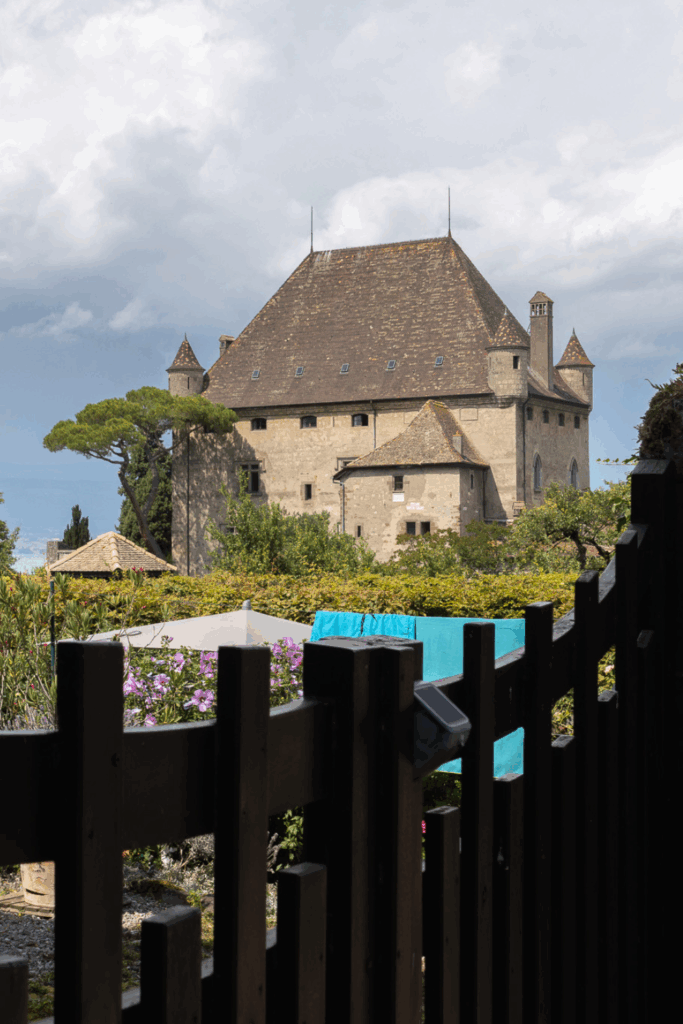
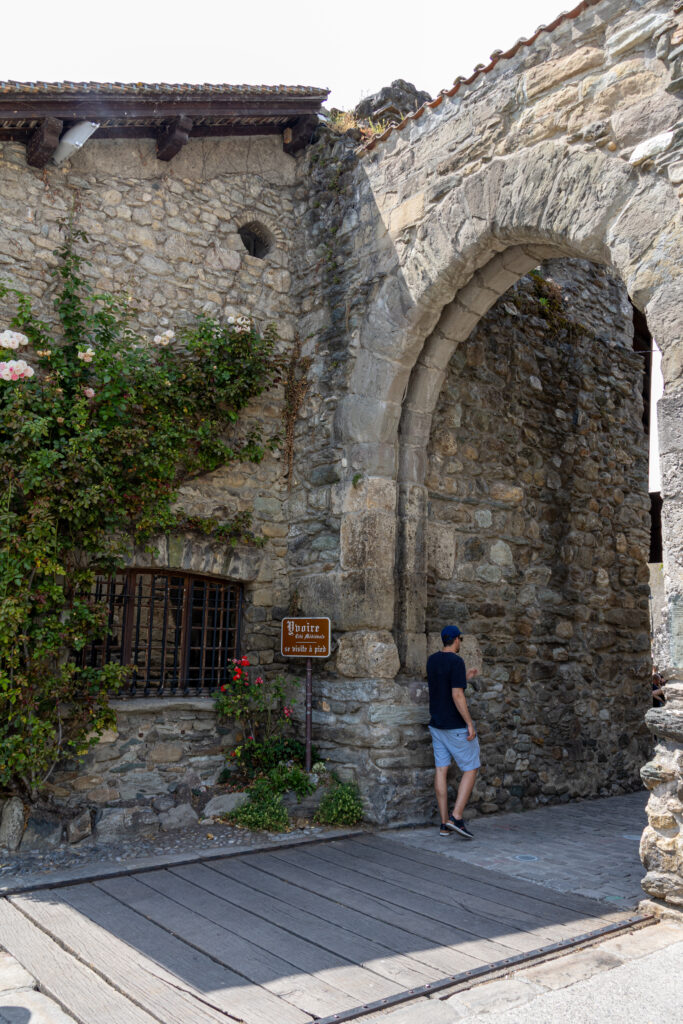
Yvoire’s cobblestone walkways are lined with tiny troves of handmade curiosities: handbags crafted from corkscrews, delicate hand-blown glass vases, and carved wooden toys for children. Restaurants proudly display handwritten signs advertising les filets de perche—fresh perch fillets from Lake Geneva—an Alpine Lake delicacy best enjoyed with a crisp white wine or rosé. Peresonal favorites in Yvoire for les fillets de perche include the outdoor patio at Le Pré de la Cure and dining within the 700-year-old walls of the Restaurant La Vieille Porte.
In 1982, Yvoire was named one of Les Plus Beaux Villages de France, a distinction awarded to only 180 villages across the country. To qualify, a village must have fewer than 2,000 inhabitants, at least two protected monuments or sites of cultural significance, and a collective ambition —think Stars Hollow-level town hall enthusiasm.
As if a translucent lake, elegant swans, a 17th-century château, cobbled lanes, and ancient walls weren’t enough, Yvoire is also famed for its lavish floral displays. The village proudly holds the title of ville fleurie, an official designation in France honoring exceptional horticultural beauty.
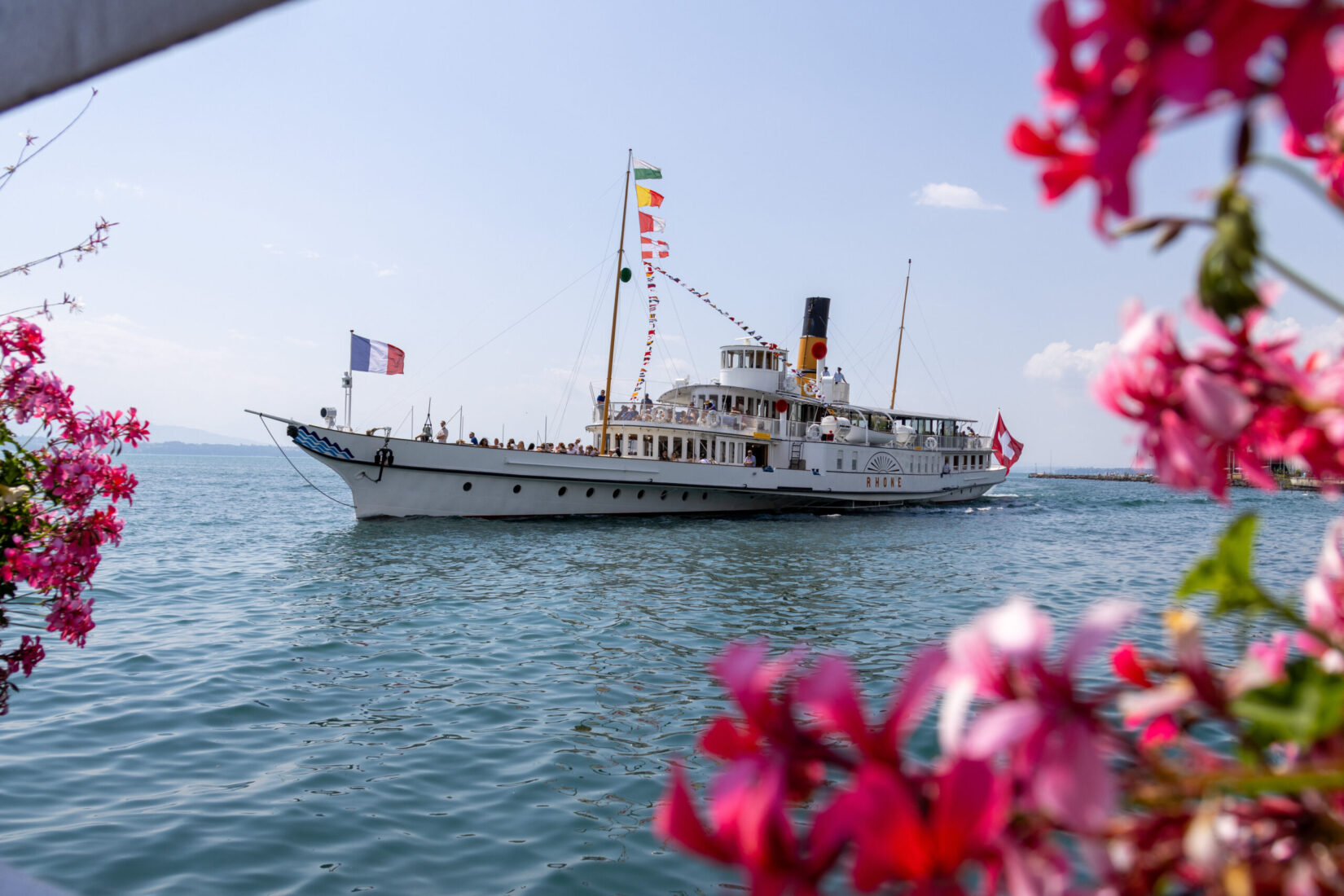
Mont Salève, France
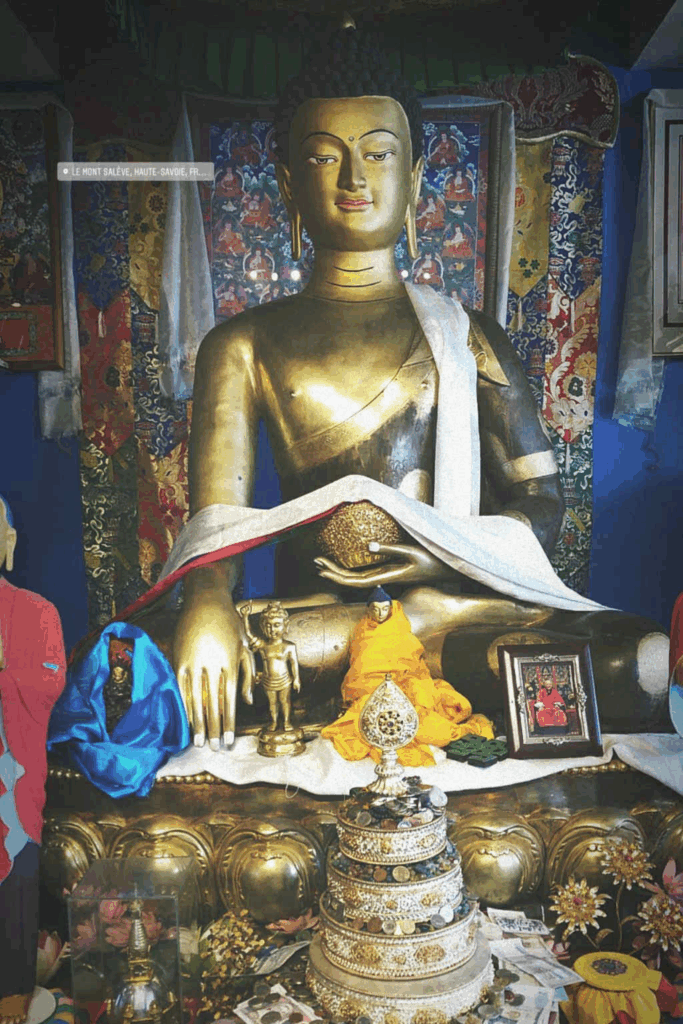
I stood in the red cable car next to two Buddhist monks in dark burgundy robes, carrying paper bags of…watermelon? Yes, I learned, monks too take pauses in between prayer to buy groceries.
Mont Salève is a wildly beautiful and curious experience- within five minutes one is transported from Swiss soil to a top of a mountain considered French territory, where the currency is in Euro, not Swiss Franc.
In the late 1800s, an electric cog railway chugged up the rugged rock path, today eased by a cable car leading to a bird’s eye view of Geneva and its emblematic Jet d’eau. Upon arrival, Tibetan prayer flags wave in the wind. Since 2010, Mont Salève is home to the Shedrub Choekhor Ling Monastery, inaugurated by the Dalai Lama in August 2011 (who also is owner of the world’s smallest vineyard in Saillon, Switzerland!)
Thrill seekers may paraglide from the top, and those with a lingering fear of being propelled through the air on a string may watch from afar. The Mont Salève also appears in what is known as one of the first Gothic novels, Mary Shelley’s Frankenstein. The steep cliffs and rocky terrain is where Shelley’s dreadful creature hid from his crimes.
Who could arrest a creature capable of scaling the overhanging sides of Mont Salève?
Aosta, Italy
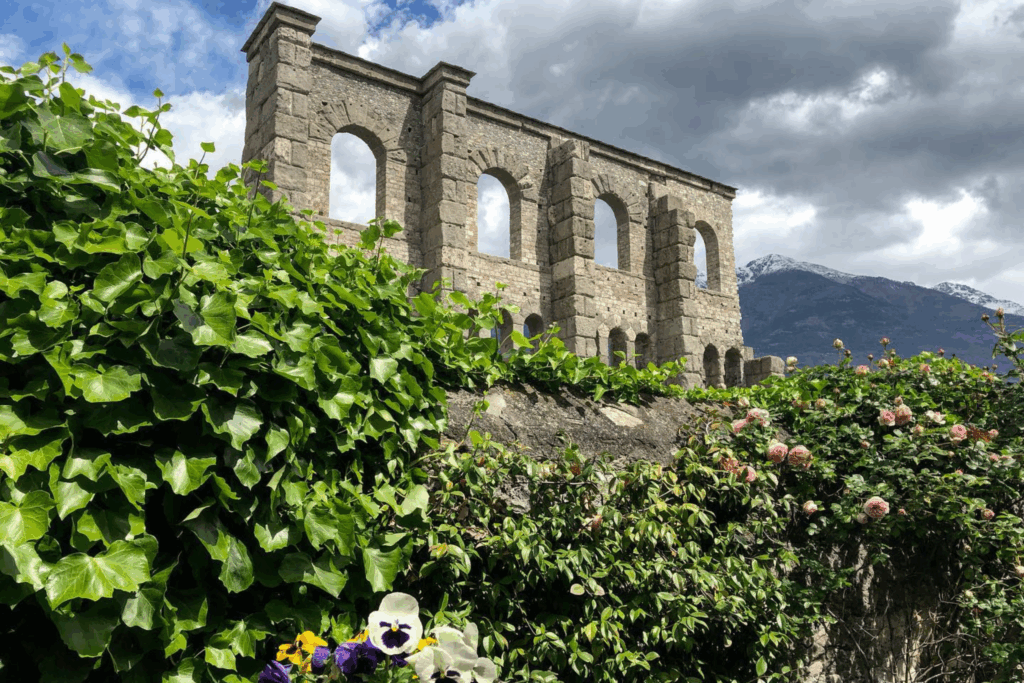
My first months alone in Geneva felt like diving headfirst into a pool of ice water. A start-up like work culture consumed me- encouraging me to work late nights and weekends. Four months in I felt anxious crawling into bed, imaging what the next day would bring. I wished for a weekend away, some place unfamiliar.
The answer was in Aosta.
I packed a canvas bag for a two-night stay (a day trip would have been sufficient; however, I thoroughly enjoy traveling at a slower pace). I was the sole passenger to board a 7am bus. The bus driver casually lit a cigarette while cruising alongside one of Switzerland’s great lakes, morning fog drifting across the water. We stopped at an unworldly like rest stop surrounded by prehistoric mountains and deep valleys, today the point where Switzerland and Italy collide.
I still find myself thinking about that gas station sandwich.
The crunchy green olive ciabatta layered with cured ham and melted mozzarella. The thought of it today makes my mouth water. And while I’ve had the opportunity to eat at fine Michelin-star establishments, the Italians have nailed the gas station sandwich like no other.
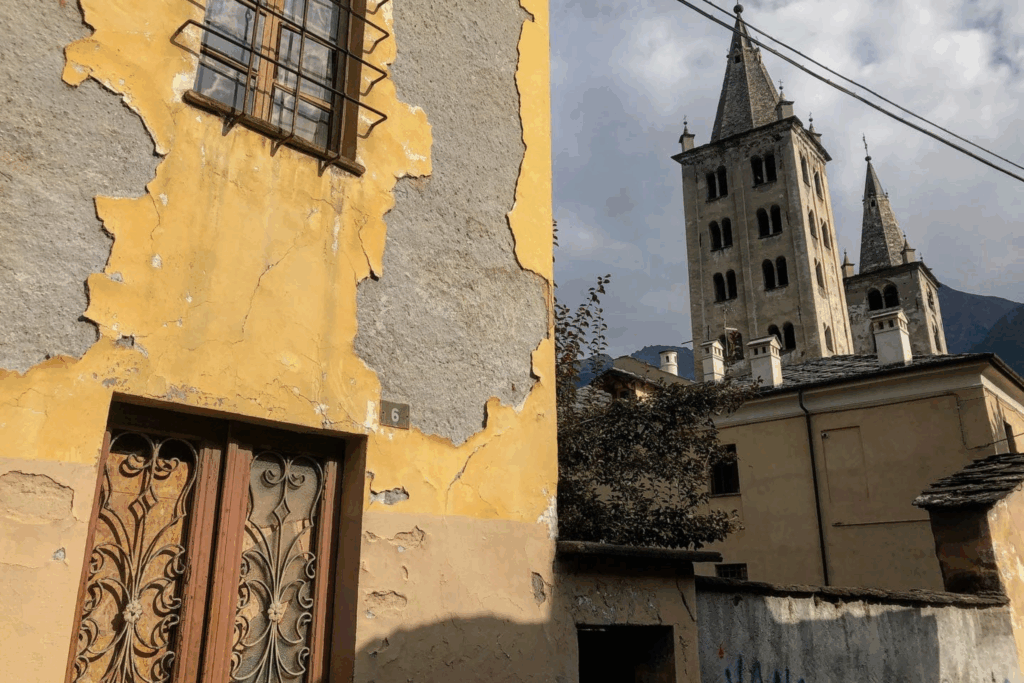
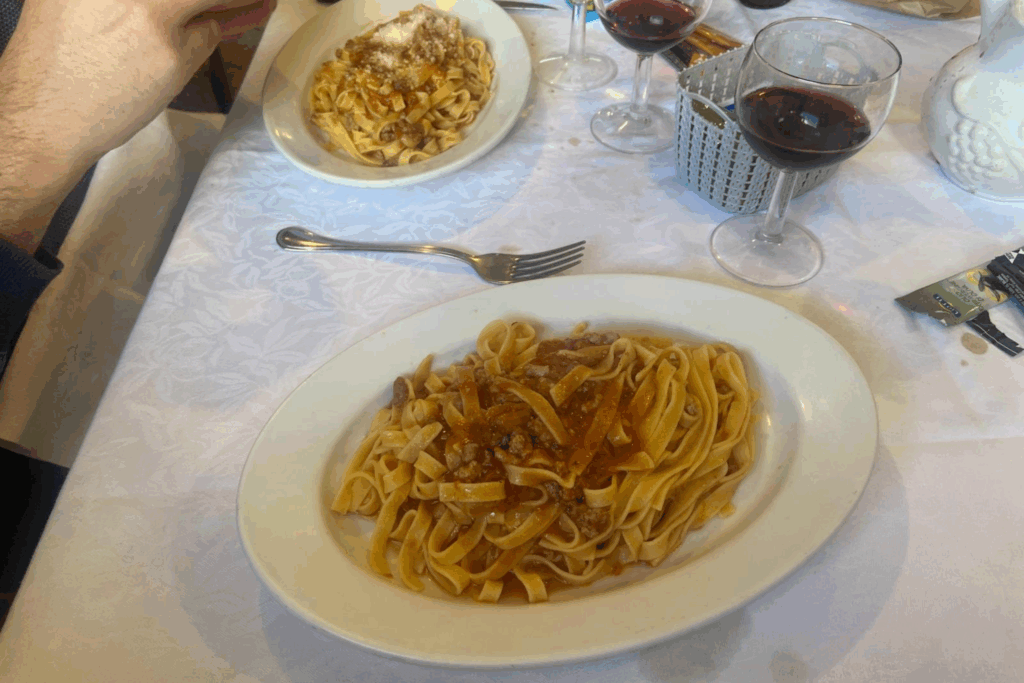
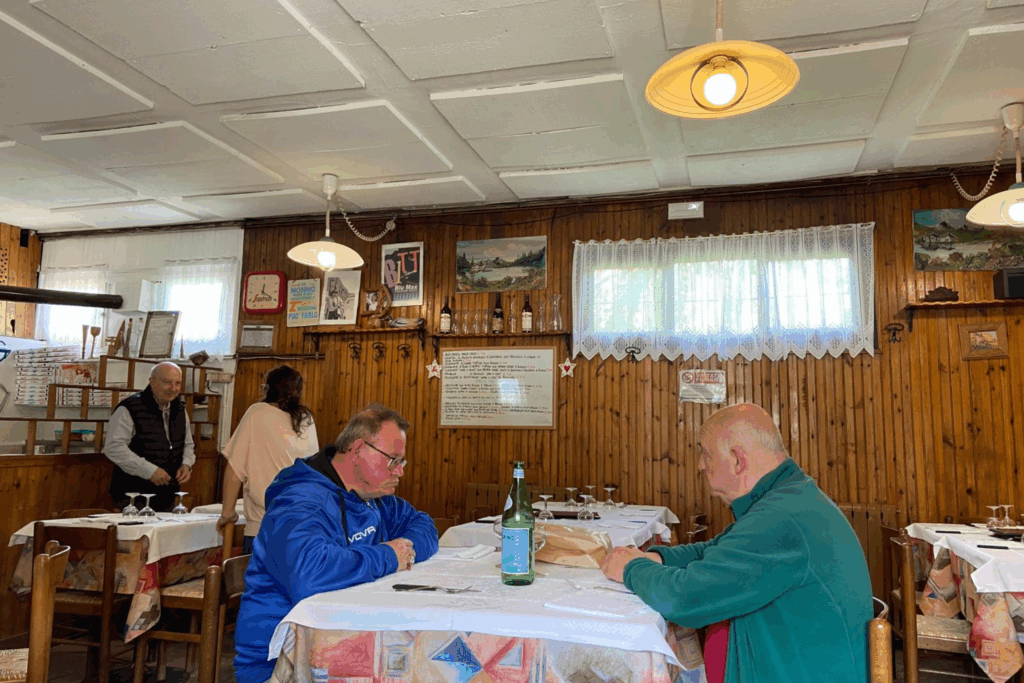
Framed by Mont Blanc, Gran Paradiso, the Matterhorn, and Monte Rosa, Aosta makes one pretty picture. Capital of the Aosta Valley, the smallest region in Italy, the area is paradise for those seeking hikes and ski slopes at high altitudes.
Yet the village of Aosta is more subdued, a personal favorite destination of mine to visit, and where I sometimes fanaticize about living in my older years. Aosta, where both Italian and French are official languages, is a culmination of Alpine polenta, cozy chalets and hand painted cowbells, paired with earthy Italian red wine, freshly grown green olives and Nonna’s homemade pasta. Shops selling Italian leather handbags and wool hats are nestled in ancient buildings, remnants of Roman ruins, with a 2,000-year-old theatre standing as a beacon in the heart of the city.
Overshadowed by Italian tourist destinations Venice, Florence and Rome, one need not look far to dine well, at an impressively low cost. I nearly fell off my chair when my husband and I recently dined for two at a price that would have barely covered one pizza in Geneva. If you are in Aosta, I highly suggest stopping at Da Manuel, Italian comfort pasta – homemade noodles, hand pressed meatballs and salad with olive oil – no frills meals that warm the soul.
Montreux, Switzerland
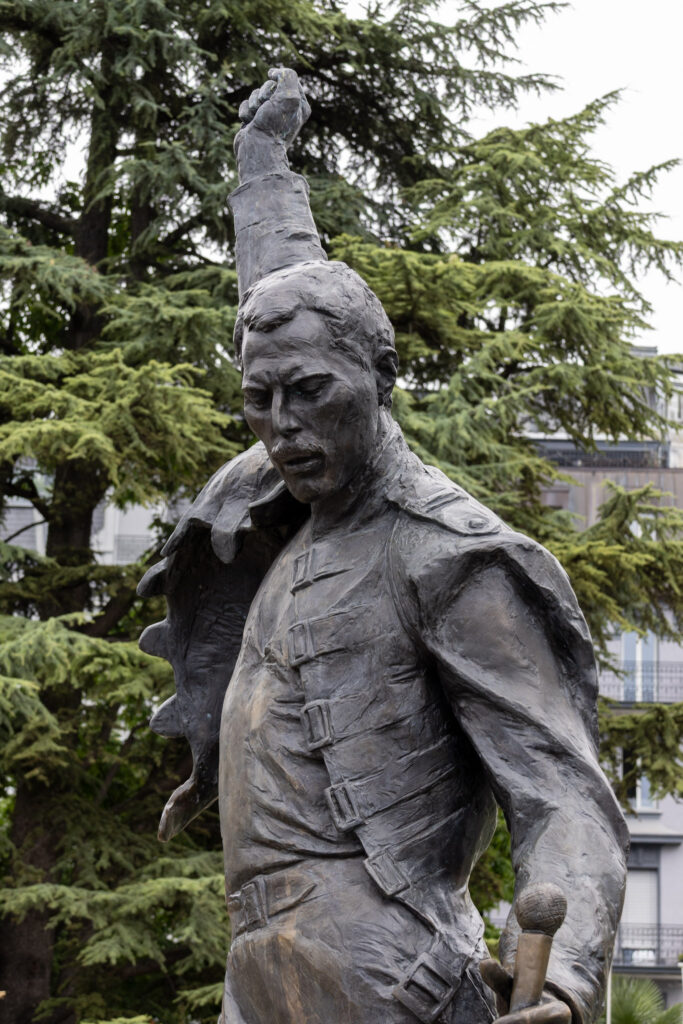
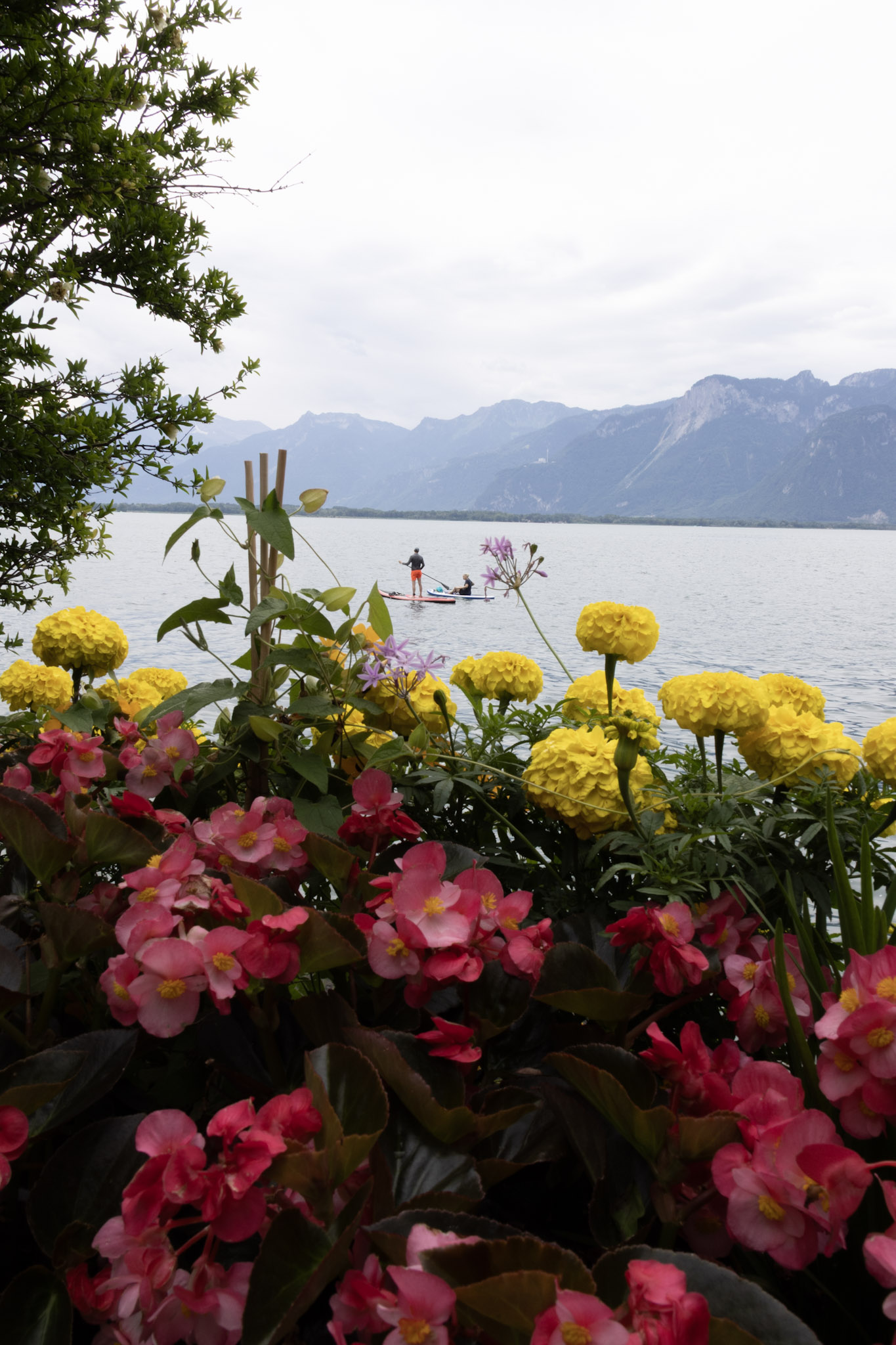
No matter the country, Queen’s Bohemian Rhapsody plays towards the end of the nightly dimly lit bars, uniting drunk boomers, millennials and Gen Zers in a chorus of off-key variations of “Scaramouche, Scaramouche, will you do the Fandango?”
Yet the legendary rock band has close ties with Montreux, buying Mountain Studios tucked away in a smoky casino in the Swiss equivalent of the French Riviera. Queen would go on to record six albums in Montreux from 1978 to 1995, including “Under Pressure” with David Bowie.
“If you want peace of mind, come to Montreux,” Queen’s lead singer Freddie Mercury once said, who spent thirteen years along Lake Geneva. Today a bronze statue commemorates Mercury, one fist in the air, the other holding a standing microphone. The city even organizes the Freddie Celebration Days near his birthday on 5 September each year, including concerts (even a local school choir singing songs by Queen) and workshops featuring those who knew Mercury.
A trip to Montreux is special at any time of the year. Summer brings with it vibrant colored flowers along the lake, and the world renown Montreux Jazz Festival taking place for a period of two weeks each July. The festival has welcomed legends such as Ella Fitzgerald, Nina Simone and Marvin Gaye. A fire at a Frank Zappa concert in 1971 at the Montreux Casino even inspired Deep Purple to write “Smoke on the Water”.
As winter approaches, wooden chalets are placed alongside the lake selling sweets, sausages and mulled wine for the Montreux Christmas Market. With 170 vendors, the marché de Noël in Montreux makes it the largest in Switzerland.
A few steps outside of Montreux is the Château de Chillon, Switzerland’s most visited historical monument. The castle was made famous in part thanks to Lord Byron’s poem The Prisoner of Chillon, inspired from the life of François Bonivard. A nobleman with an unwelcome habit of political activism, Bonivard was imprisoned in the dungeon of Chillon Castle for his unfailing committment to the independence of Geneva, vocally opposing the House of Savoy’s efforts to control the region. When describing his time from 1530 – 1536 in prison, Bonivard is quoted as having “wore away the floor, creating a path in stone”.
Gruyères, Switzerland
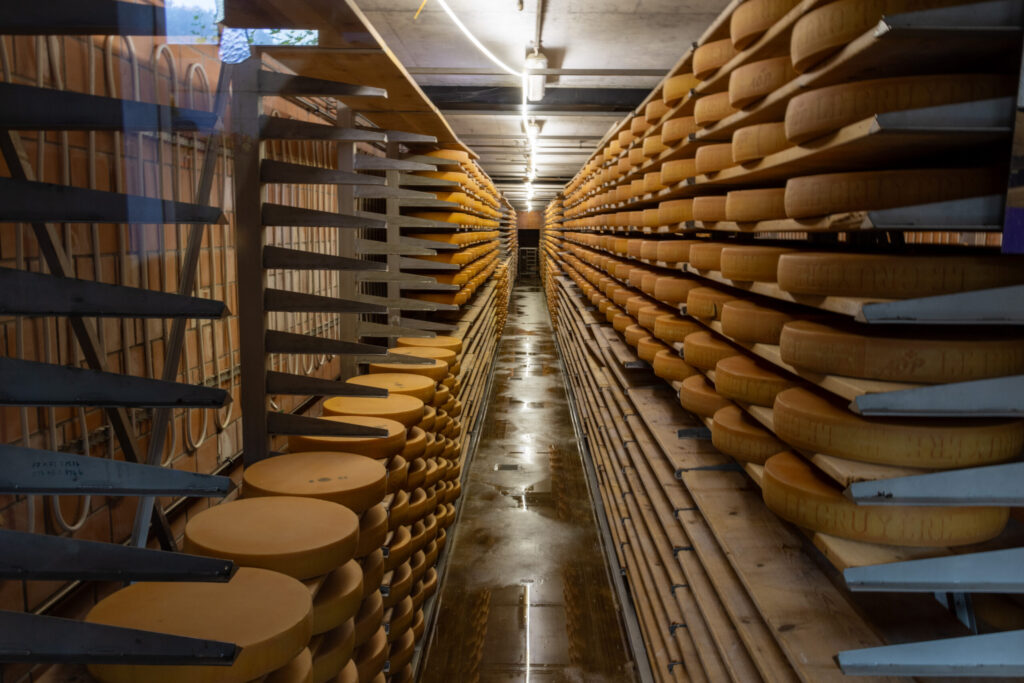
Gruyères was my now husband’s and I’s starting point for a road trip across Switzerland during the COVID-19 pandemic, when travel outside of the borders proved complicated.
Despite it being a sweltering 30°C outside (86°F), we sat outside on a patio, twirling crumbled pieces of baguette onto metal prongs into a pot of melted cheese, a commonplace Swiss tradition during the colder months of December and January. Yet traveling to Gruyères without tasting its cheese felt like going to Paris without seeing the Eiffel Tower, or to New York City without trying a street cart hot dog.
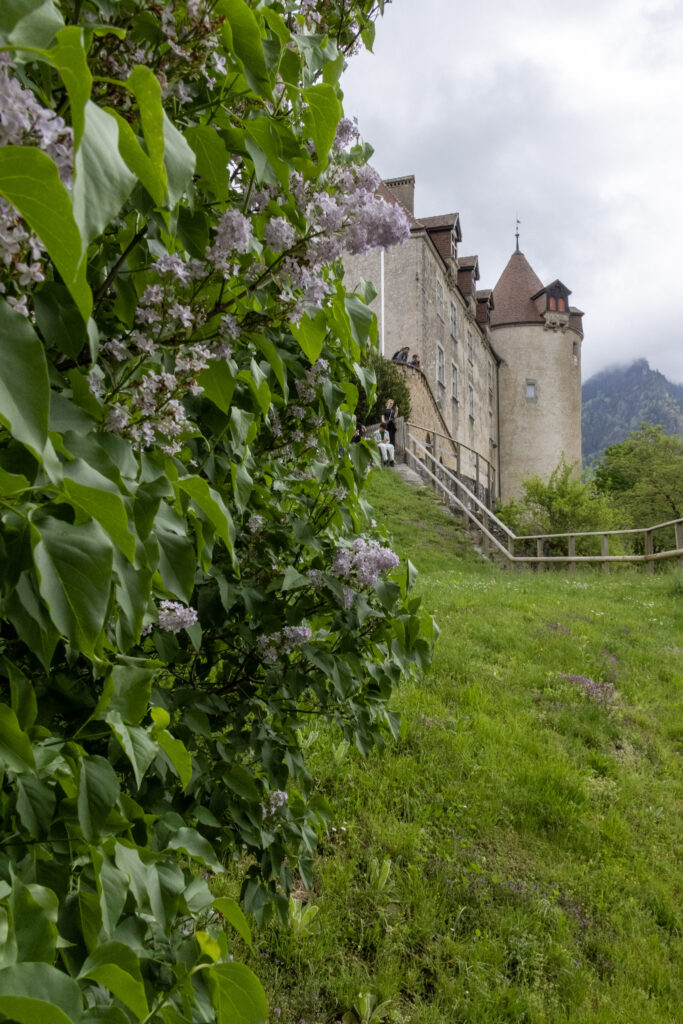
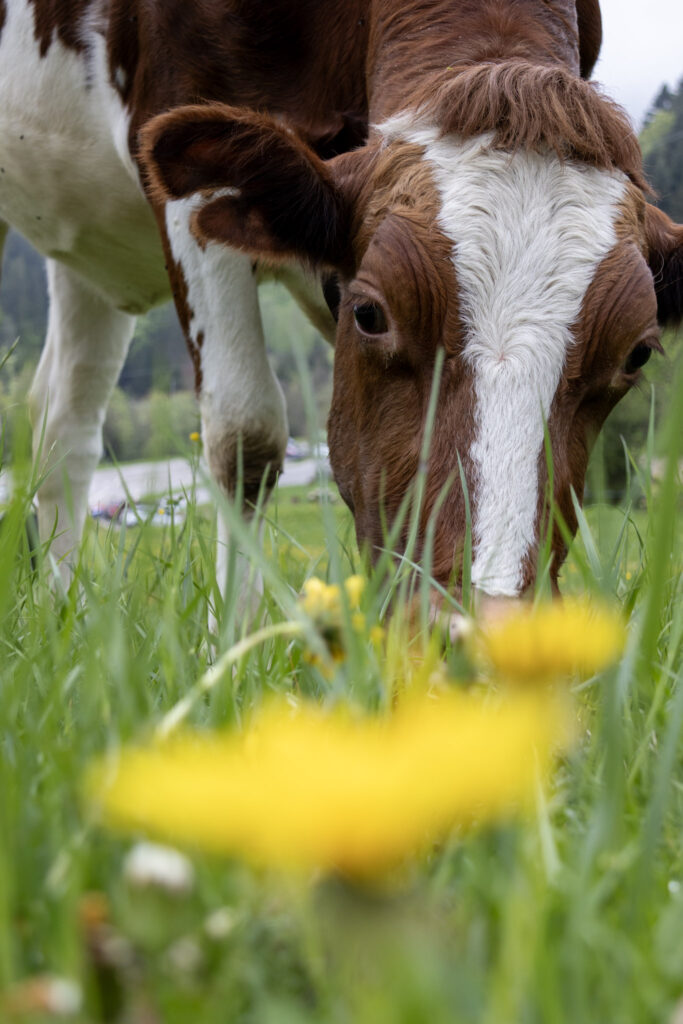
Famed for its cheese (Switzerland produces approximately 29,000 tonnes of Gruyère each year), the medieval village is one of many across the country to organize an annual festival to commence the start of Alpine cheese production. The season concludes in the fall with a parade of flower-crowned cows with hand painted bells, alongside children walking in folkloric Heidi-esque Swiss clothing.
Despite its modest size, Gruyères attracts busloads of international tourists. I even once spotted a group of American Mennonites on a tour throughout the cobblestone streets, reconnecting with their Swiss heritage. Visitors flock to taste chocolate at the Maison Cailler chocolate factory and museum, snap photos from Gruyere’s medieval castle, and grab a drink from the underbelly of an alien at the HR Giger bar.
Lavaux, Vineyard Terraces, Switzerland
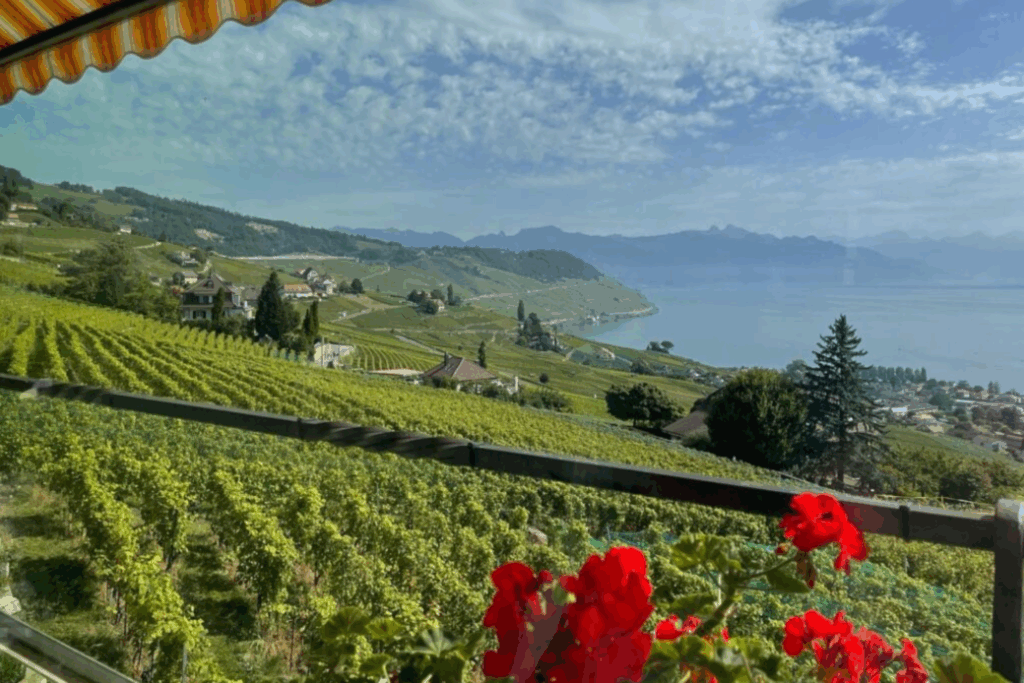
Looking from the tops of the terraced vineyards of Lavaux reminds me of an elaborately constructed ant hill. As leaves begin to turn crimson and gold, we’ve made it our tradition to head each autumn to Lavaux to explore its gecko-filled pathways overlooking Lake Geneva.
While establishments such as the luxury hotel Le Baron Tavernier or pop up spa Swiss Wine Therapy cater to international tourists, the region attracts locals alike, eager to explore the trails interwoven amongst its 11th century vineyards. The Lavaux vineyard terraces was granted the title of World Heritage Site by UNESCO in 2007, considered a living heritage through its centuries-long interaction between people and their environment. According to UNESCO, strict measures have been taken to protect the site from creeping urbanization from nearby towns of Lausanne and Vevey-Montreux.
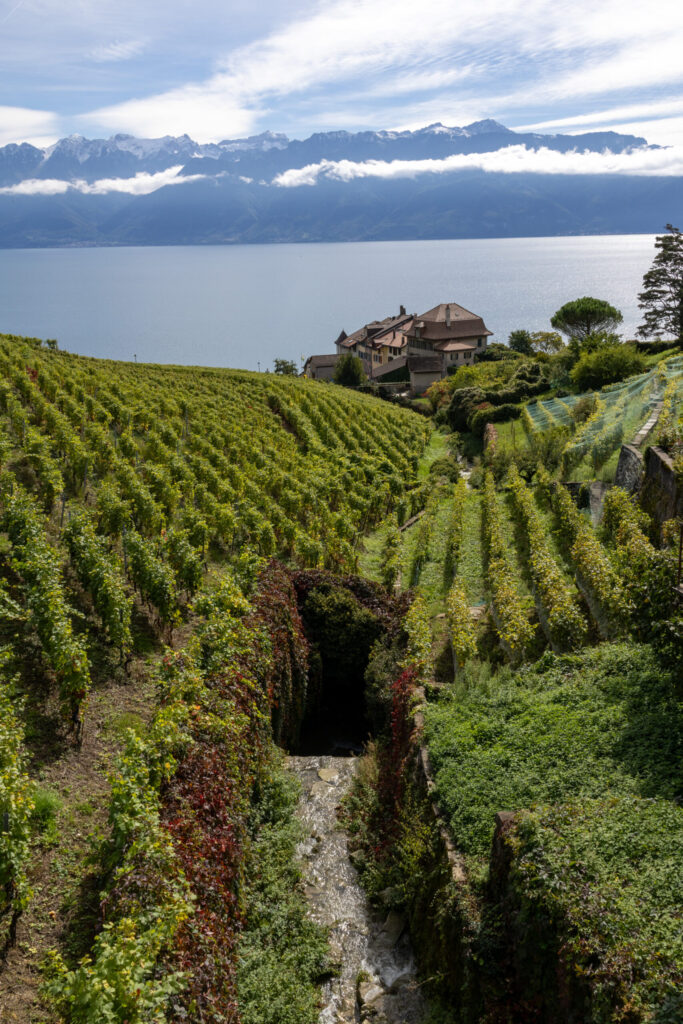
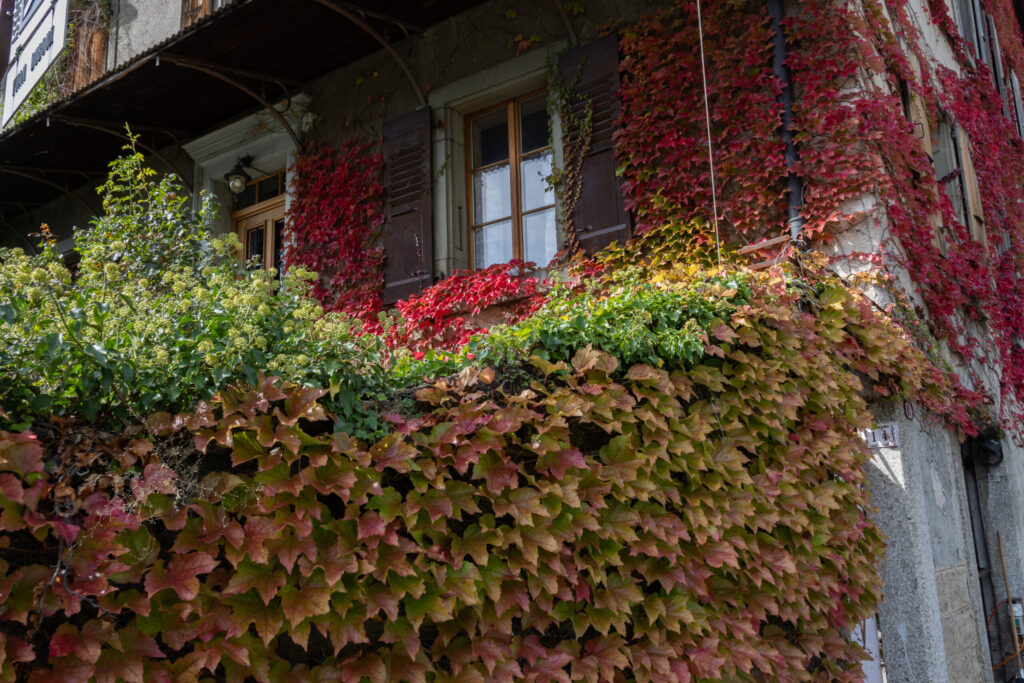
“Three kilometers from here is considered exotic,” our waitress said when sharing the wine list at the Auberge du vigneron.
While Switzerland proudly shares its chocolate, only 1% of Swiss wine is exported, a rate that has remained stable over the past 20 years. Yet Swiss wine production dates back to the Roman Empire. The lavaux region predominantly cultivates Chasselas, a white grape nicknamed fendant, literally meaning “to split”, as the grains crack underneath the tooth. The Chasselas grape is harvested into a fruity white wine, pairing well with local specialties such as fondue and raclette. From April to November, the Lavaux Express allows visitors to ride throughout the vineyards and, dependent on the route chosen, taste wines in local cellars or visit the village market.
Lausanne, Switzerland
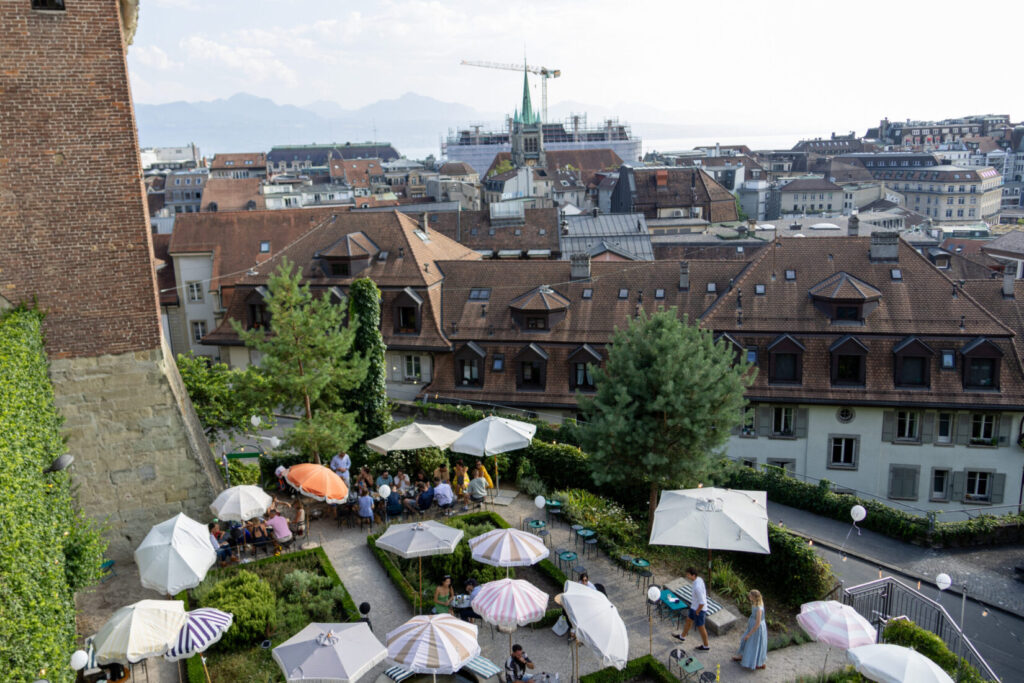
Lausanne feels like Geneva’s slightly older, hipper cousin. The one who occasionally pretends to inhale smoke from a cigarette and shaves her legs before others are of age (well…my cousin did this anyway and I found this very cool at eight-years-old). Lausanne has what tourists often think Geneva lacks – a feeling of worn in jeans.
The city is a university town, home to several museums, skateboarders and lively bars and restaurants. It’s also uphill, giving it a feeling of being in San Francisco, California or Lyon, France – cities deemed cool in guidebooks and Reddit subgroups. Does walking uphill grant a city a cooler aesthetic? While Geneva is headquarters for several international organizations and banks, Lausanne feels more residential.
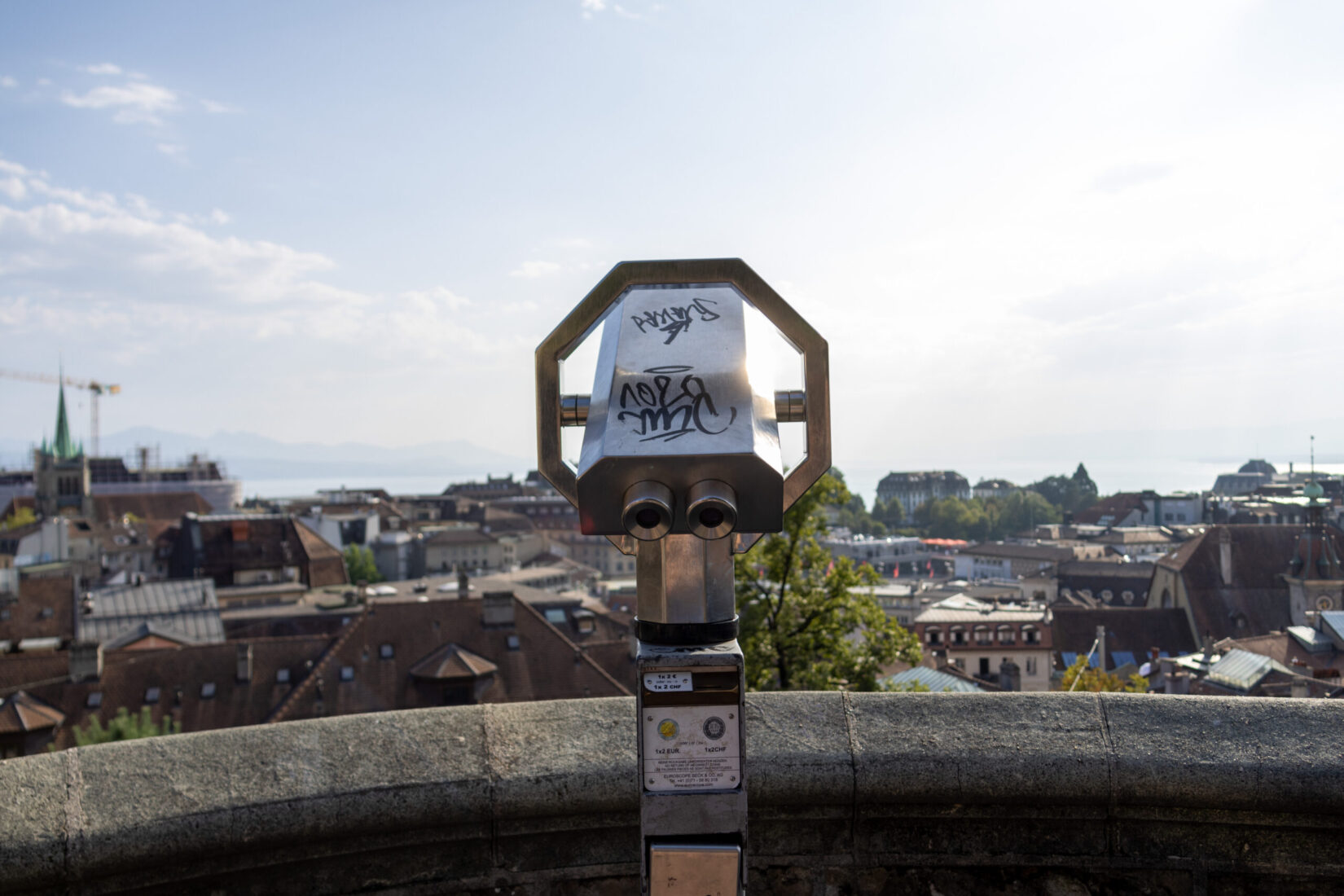
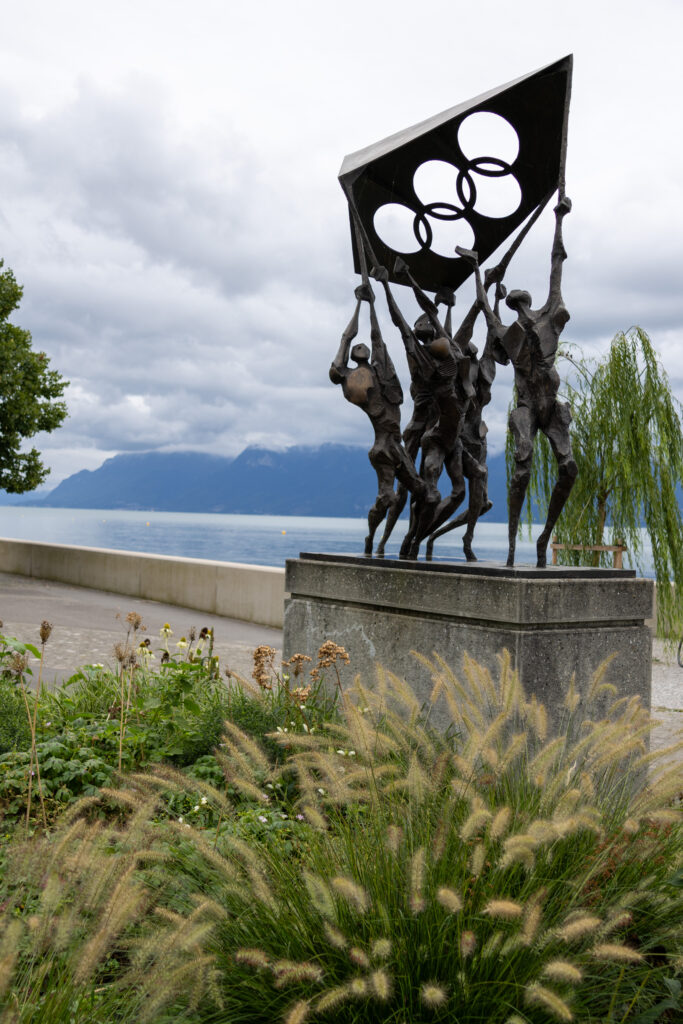
What makes Lausanne also unique is that it is the world’s Olympic Capital, home to the International Olympic Committee (IOC). While the first written records of the Olympics date back to 776 BC, the games were revived by French Baron Pierre de Coubertin in 1894. Initially based in Paris, the IOC moved to Lausanne in 1915 in the midst of World War I, a location that Coubertin felt would prove more peaceful being located in a neutral state.
Morges, Switzerland
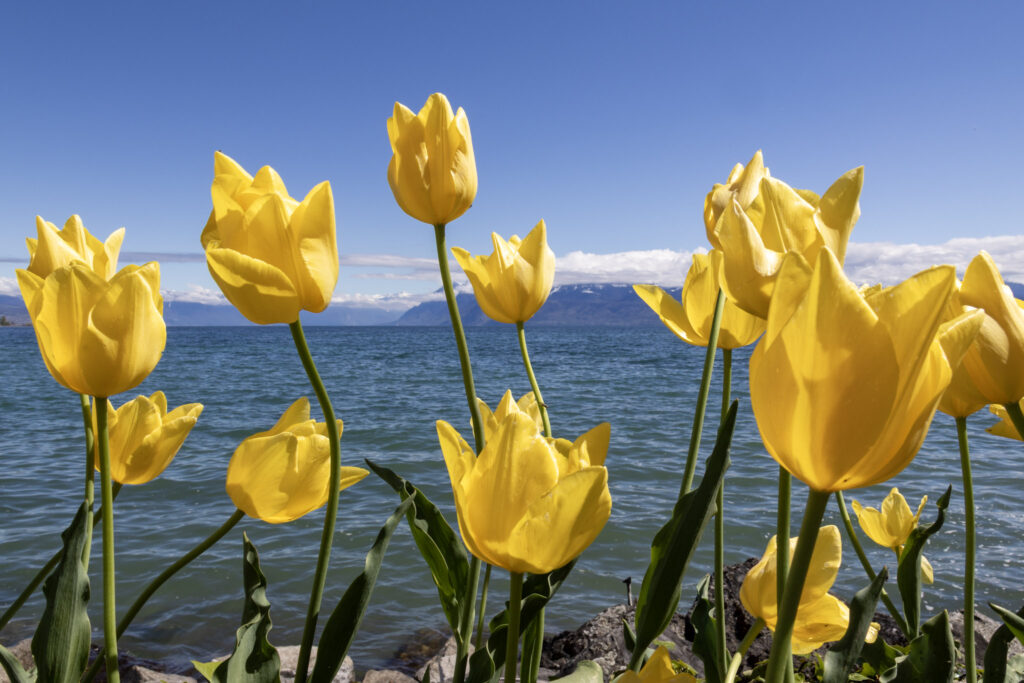
On sweltering summer days, when Geneva’s man-made beaches are packed with overstimulated teenagers and sticky-fingered toddlers, I dream of Morges.
This lakeside town of roughly 17,000 residents is famously associated with movie star and humanitarian Audrey Hepburn (read more about Hepburn’s connection with Switzerland here). Hepburn spent 30 years of her life in the neighboring village of Tolochenaz, a four-hour drive from Morges. Her home “La Paisible,” aptly translates into “peaceful place” in French.
Walking alongside the lakeside promenade, it’s easy to see how someone could be infatuated with Morges. The village is easily walkable, with views that make Mont Blanc look within an arm’s reach. Wednesdays and Saturdays bring a farmer’s market to the old town, nearby the city hall where Hepburn married Andrea Dotti in 1969.
Each spring, Morges becomes a magnet for visitors during its annual tulip festival. Nearly 350 varieties bloom across the Parc de l’Indépendance, painting the park in vibrant colors. This year’s theme was “water,” with tulip arrangements designed to resemble sea creatures—best appreciated from above by drone.

